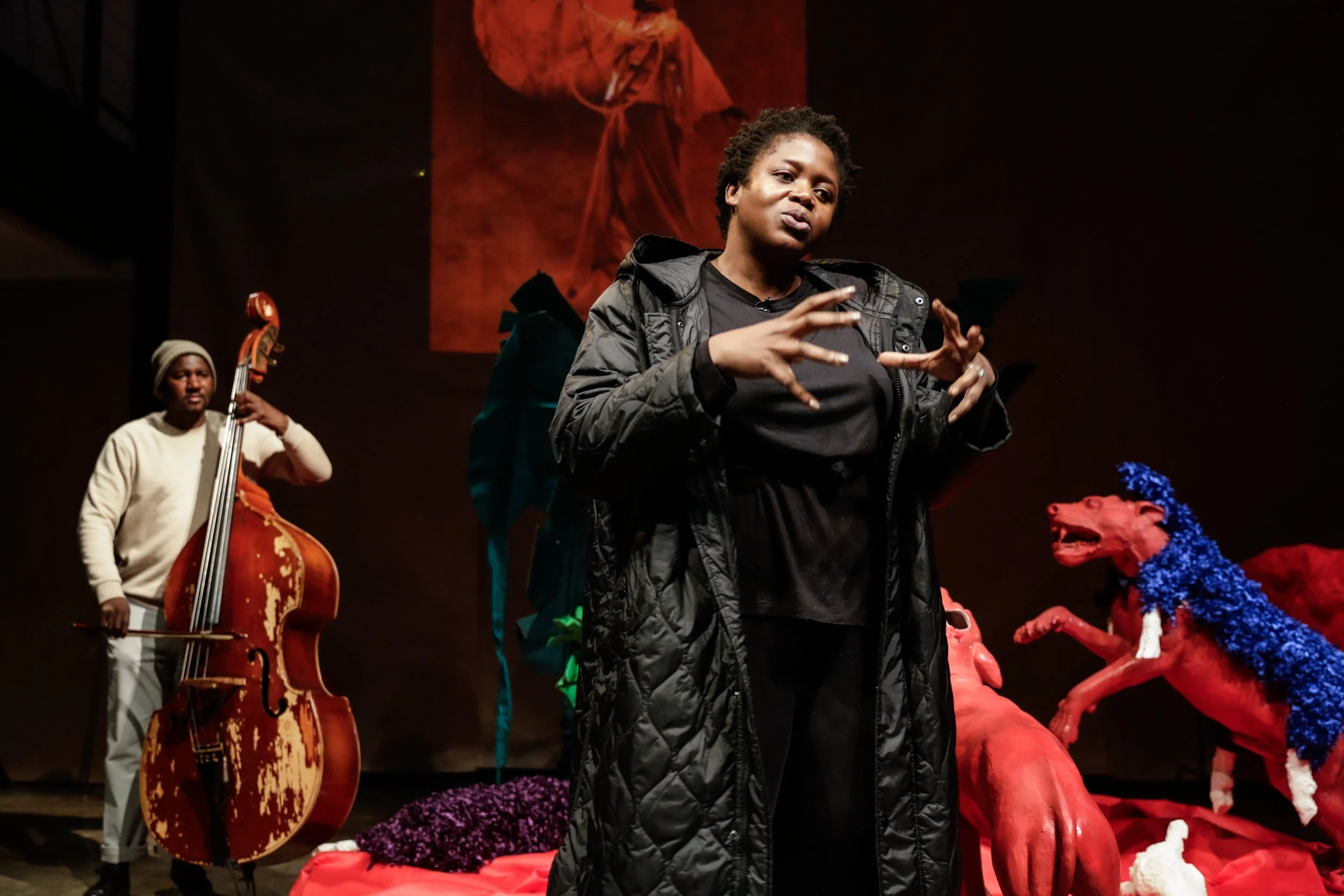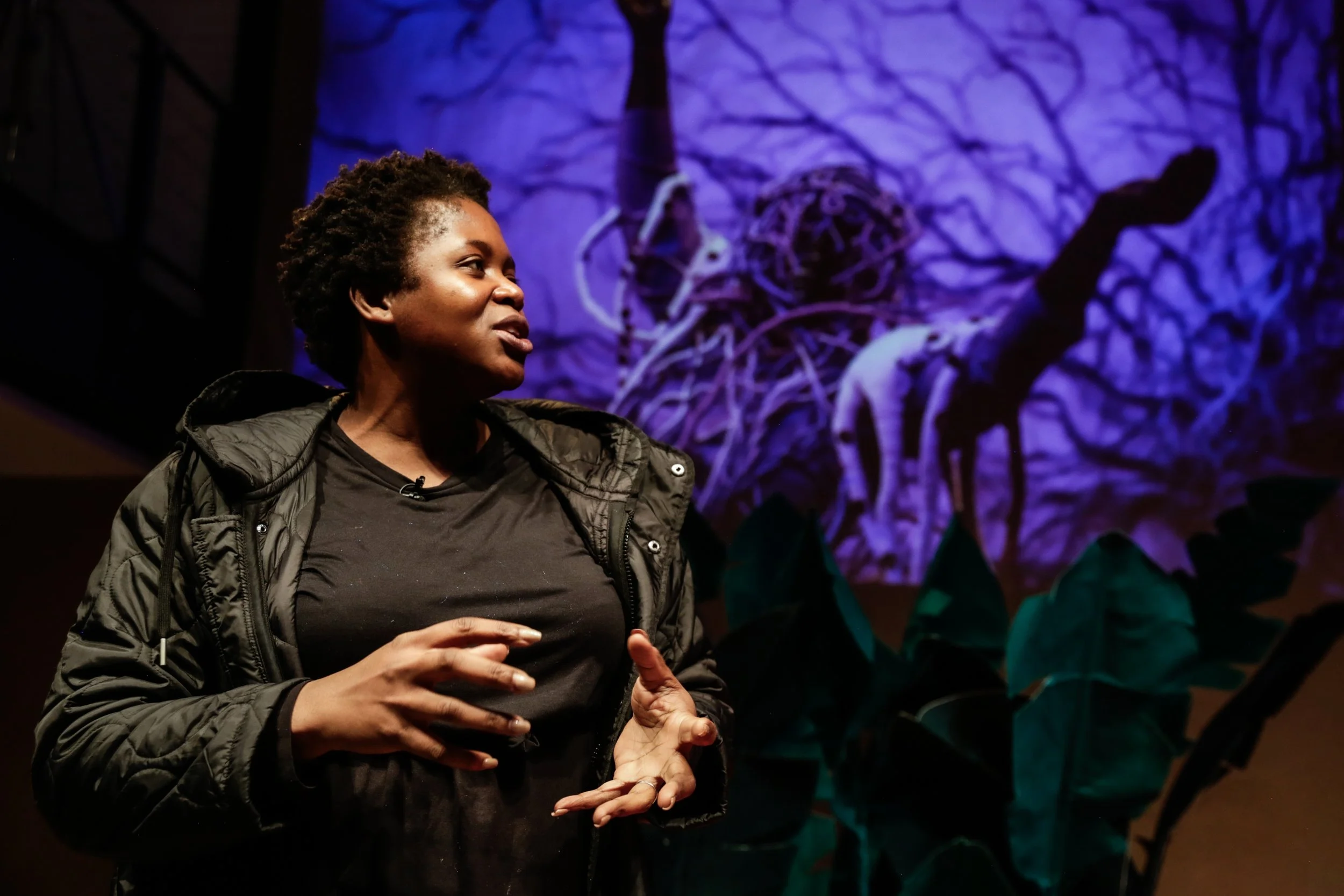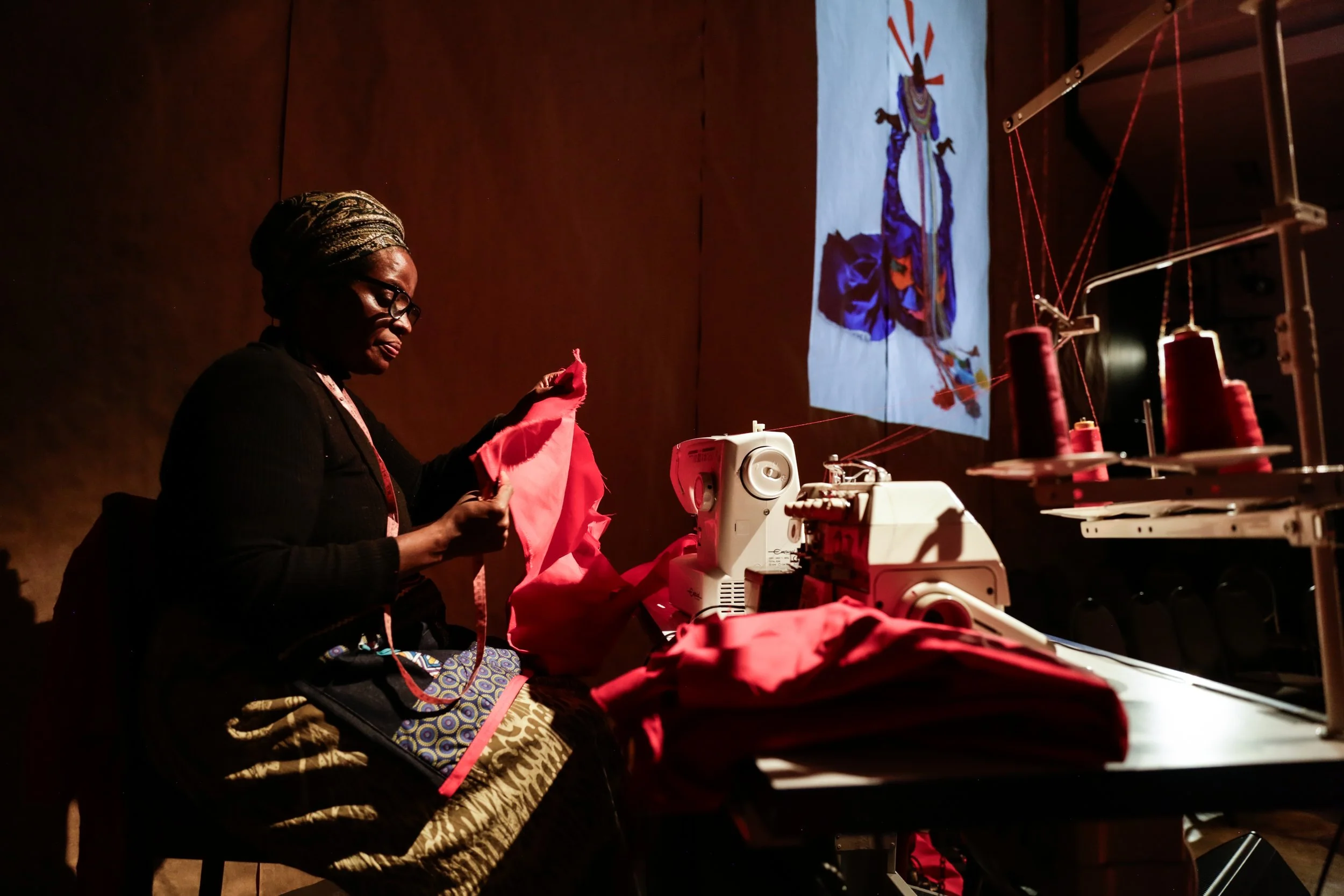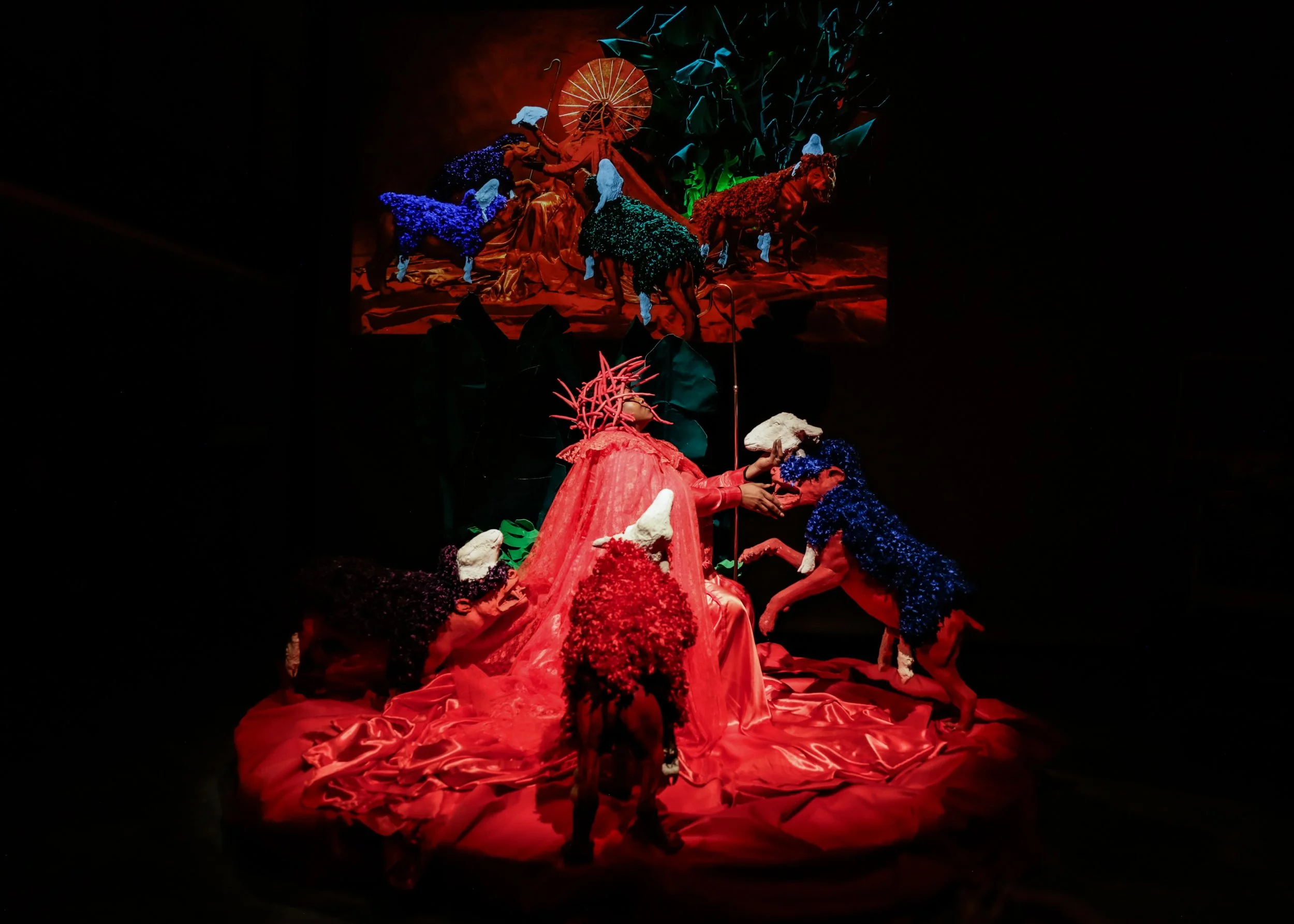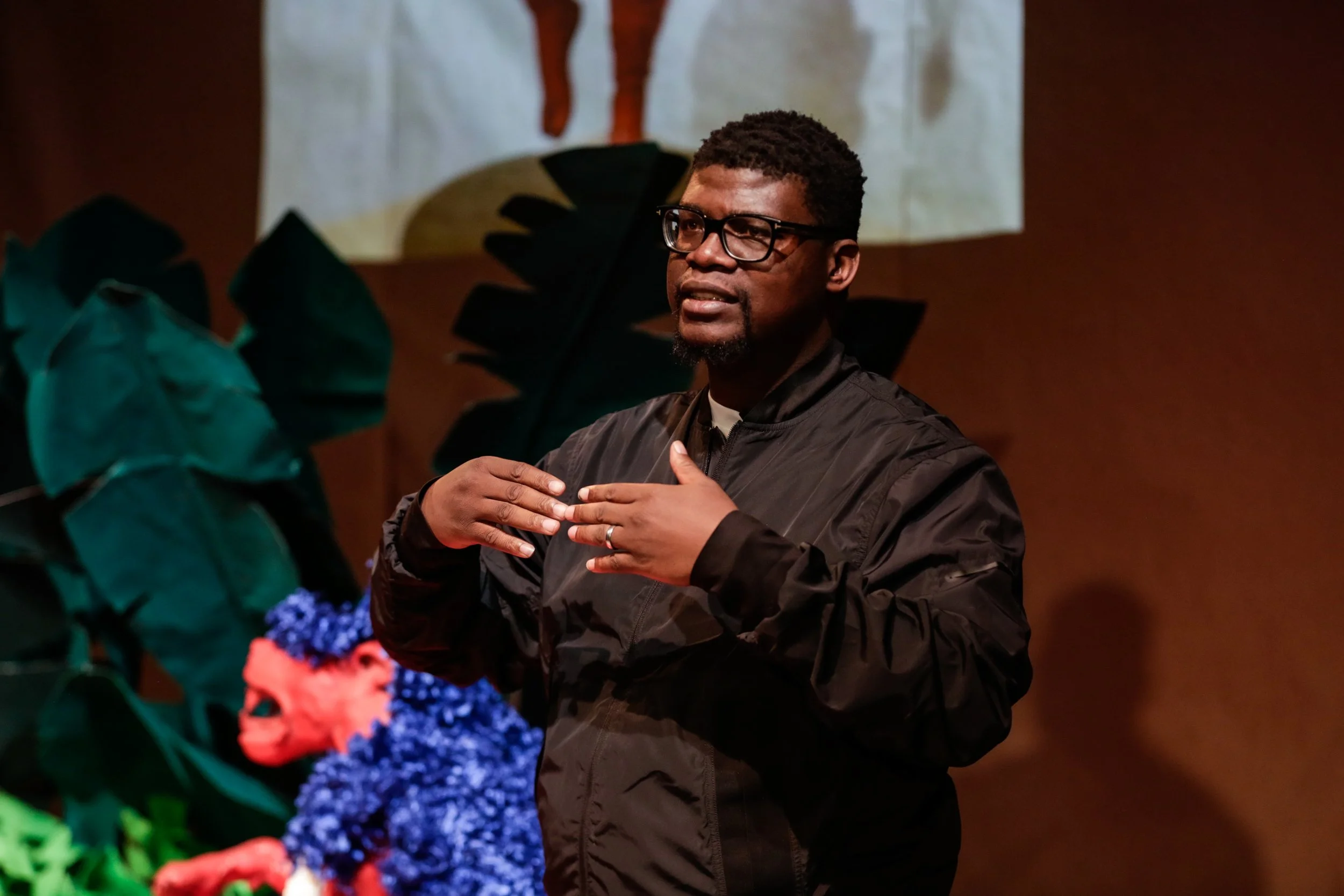There is an image, half constructed, and the low, ruminating notes of the double bass. Elsewhere, the steady rhythm of a sewing machine. It is a dialogue between image and sound, process and performance. Mary Sibande enters and begins.
On Friday 23 June, SO | The Academy for the Less Good Idea hosted HOW | Showing the Making led by multidisciplinary artist Mary Sibande at The Centre for the Less Good Idea. She was joined by artist and lecturer Lawrence Lemaoana, double-bassist and composer Thembinkosi Mavimbela, and seamstress Pretty Nyathi.
Visual metaphors
“I have used idioms and expressions as a starting point, using these as visual metaphors,” – Mary Sibande
In this HOW, Sibande centres a single image, ‘Clothed in the skin of righteousness’, from her artistic archive and takes the audience through the process of building an image, its context, inherent performativity, and narrative, mirroring her studio process. In ‘Clothed in the skin of righteousness’, four snarling dogs in sheep’s clothing are tended to by a central shepherd-like figure.
All of the colours that Sibande has worked with over the different stages of her career – blue and its associations with labour; purple with its links to royalty, but also to resistance in a South African context; and the universal anger of red – are represented in the work, allowing for a linear progression of Sibande’s life, career, and ways of working that culminates in the staged image.
Over the course of the performance lecture, Sibande uses specific artworks, or recurring characters and motifs, to demonstrate this. There is the introduction of the rabid dog – Mgodoyi – to her work, for example, which was inspired by a bronze Jock of the Bushveld statue in Barberton, Mpumalanga, where Sibande was born. Similarly, the fictional character of ‘Sophie’ is a homage to Sibande’s women ancestors and speaks to a history of labour and sacrifice, while the figure of ‘Yasuke’ uses the first known black samurai to challenge the notion that, historically, black people lacked agency and mobility. “History tells us that black people did not move freely, that black people were static,” explains Sibande. Honouring Yasuke becomes a way of using art to both honour and update history.
Tracing the rhizomatic
Where Sibande provides the audience with biographical knowledge, points of inspiration, and the personal process of making her work, Lemoana is able to lend a conceptual understanding of the work, rooted in an academic or art historical context.
One of the main points highlighted by Lemaoana is the rhizomatic quality of Sibande’s work.
“Something can sprout somewhere, grow roots, travel, and sprout somewhere else,” he explains. Similarly, the HOW itself takes on a somewhat rhizomatic structure. While Sibande’s central image is used as a starting point, its subsequent analysis and deconstruction by Sibande and Lemaoana lend a non-linearity to the evening, where certain images, moments, themes and motifs come to inform myriad rhizomic pathways.
The metaphor expands and develops. Characters emerge and evolve, finding resonance in other artworks, other narratives. In a body of work such as ‘Long Live the Dead Queen’, the character of ‘Sophie’ shirks servitude and steps into her power, losing the signature blue and white dress and apron and replacing it with a regal purple. As Lemaona talks us through these links in Sibande’s work, she is always at work – being measured by Nyathi, building the image, dressing the set, or simply considering it from new angles.
Sibande’s research can also be seen as being a rhizomatic process. From the music of Nina Simone, to an illustration found on the cover of an old copy of J.M Coetzee’s Disgrace, we hear of Sibande’s various influences, ways of researching, problem-solving, and the multiple, generative parts of the process of making that have come to define her work. She draws on texts, songs, designs and more, absorbing them and subsequently transforming them before putting them out into the world through her work.
Completing the collective image
Sibande cites the artist and stage designer Es Devlin when she speaks about the ‘democracy of theatre’. When considering an image, anywhere you look, every entry point into the image must provide you with a part of the story, or serve as a place to begin making sense of the image, she explains. In this way, the myriad points of inspiration, the rich themes and motifs in her work, all serve as a starting point for the viewer.
In a scene of slow, striking choreography, Sibande steps into the costume that Nyathi has been creating. She dons the dress, the headgear, steps onto the plinth and into the half-constructed image, transforming into the figure in red. Mavimbela continues to produce subtle, but evocative sounds on the double bass, and Sibande raises the lamb’s head above the head of the snarling dog. On screen, and on stage, the completed work emerges before us. There is only stillness, and a collective reverence for the fully realised image.
Fashion, mythology, and what to do with hands
In a Q&A session following the HOW, we hear of Sibande’s initial impulses to study fashion design and how visual art was a secondary pursuit. We also hear of her more recent work with scale – working with smaller figures – and how to resolve issues in the studio such as working to produce anatomically correct hands. A question around mythmaking also leads to further reflections on the notion of contemporary mythology and the role of storytelling in art.
– David Mann
PHOTOGRAPHER | Zivanai Matangi
